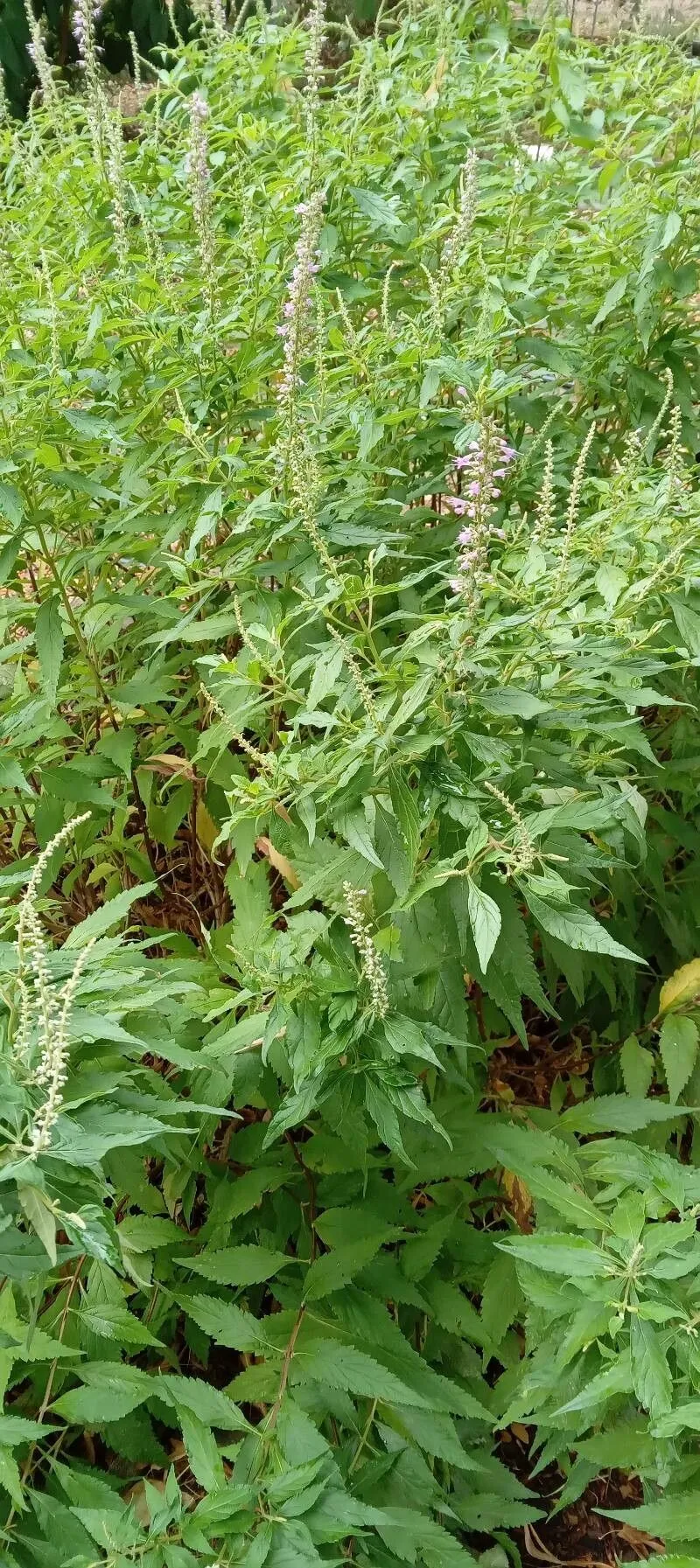
Author: L.
Bibliography: Sp. Pl.: 564 (1753)
Year: 1753
Status: accepted
Rank: species
Genus: Teucrium
Vegetable: False
Observations: Canada to N. Mexico, Honduras, Cuba
American germander, scientifically known as Teucrium canadense, is a perennial herbaceous plant that belongs to the Lamiaceae family. This plant, first described by the renowned botanist Carl Linnaeus in his seminal work “Species Plantarum” in 1753, can be found widely distributed across North America, ranging from Canada and the northern regions of Mexico down to Honduras and Cuba.
American germander thrives in a variety of habitats, including marshlands, prairies, and forested areas, often favoring moist, well-drained soils. This adaptability makes it a resilient species in diverse environmental conditions. The plant typically reaches a height of 1 to 3 feet, with square stems characteristic of many members of the mint family. Its foliage comprises opposite, lance-shaped leaves that are delicately toothed and emit a mild fragrance when crushed.
The plant is particularly noted for its spiked inflorescences, consisting of small, tubular flowers that bloom in shades of white to pale lavender. These flowers are highly attractive to pollinators, including bees and butterflies, making Teucrium canadense an important species for supporting local ecosystems and promoting biodiversity.
In addition to its ecological benefits, American germander has been historically valued for its medicinal properties. Indigenous peoples and early settlers utilized the plant infusions for various ailments, ranging from digestive issues to respiratory conditions. Contemporary herbalists often recognize it for its potential anti-inflammatory and antimicrobial properties, although scientific validation is ongoing.
Despite its beneficial attributes, Teucrium canadense can exhibit somewhat aggressive growth under optimal conditions, leading it to occasionally be considered invasive in certain regions. Effective garden management and habitat monitoring are recommended to prevent unintended spreading.
In summary, American germander is a versatile and ecologically significant plant with a rich history of medicinal use and benefits to pollinators. Its broad distribution and adaptability have cemented its place in the flora of North America, from Canada to Cuba, reminding us of the intricate and dynamic relationship between plants and their environments.
Eng: american germander, canada germander, hairy germander, wild germander, wood sage, wood-sage, creeping germander, head betony
Swe: amerikansk gamander
Fra: germandrée du canada
En: American germander, Wild germander, Wood-sage, Canada germander, Thyme, Candad germander, Hairy germander, Creeping germander, Wood sage, Head betony
Fr: Germandrée du Canada
Sv: Amerikansk gamander
Taken Aug 18, 2022 by Fabrice Rubio (cc-by-sa)
Taken Jun 14, 2022 by William Coville (cc-by-sa)
Taken Jul 11, 2019 by Tim Huegerich (cc-by-sa)
Taken Jul 14, 2022 by Maureen Darton (cc-by-sa)
Taken Jun 23, 2022 by Julia Dijkmans (cc-by-sa)
Taken Jun 20, 2015 by EOL − Jim Varnum (cc-by-nc)
Taken Aug 22, 2015 by EOL − Jenny Smith (cc-by-nc)
Taken Aug 22, 2015 by EOL − Jenny Smith (cc-by-nc)
Taken Jun 24, 2015 by EOL − Sam Kieschnick (cc-by-nc)
Taken Aug 18, 2022 by Fabrice Rubio (cc-by-sa)
Taken Aug 18, 2022 by Fabrice Rubio (cc-by-sa)
Taken Jun 21, 2022 by L b (cc-by-sa)
Taken Jul 28, 2020 by Shirley Hutcherson (cc-by-sa)
Taken Jul 3, 2021 by Lorri Yurick (cc-by-sa)
Taken Jul 19, 2019 by cAz (cc-by-sa)
Taken Jan 1, 1900 by EOL − Steve R. Turner (cc-by-nc-sa)
Taken Jan 1, 1900 by EOL − Steve R. Turner (cc-by-nc-sa)
Taken Jan 1, 1900 by EOL − Steve R. Turner (cc-by-nc-sa)
Taken Jun 24, 2007 by EOL − Ron Thomas (cc-by-nc-sa)
Taken Nov 18, 2013 by EOL − Ben VanderWeide (cc-by-nc)
Taken Aug 5, 2022 by Amber Benbow (cc-by-sa)
Taken Oct 18, 2020 by Heather Anne Walter (cc-by-sa)
Growth form: Single Stem
Growth habit: Forb/herb
Growth rate: Moderate
Ph maximum: 8.0
Ph minimum: 4.5
Family: Myrtaceae Author: (F.Muell.) K.D.Hill & L.A.S.Johnson Bibliography: Telopea 6: 402 (1995) Year: 1995 Status:…
Family: Rubiaceae Author: Pierre ex A.Froehner Bibliography: Notizbl. Bot. Gart. Berlin-Dahlem 1: 237 (1897) Year:…
Family: Sapindaceae Author: Koidz. Bibliography: J. Coll. Sci. Imp. Univ. Tokyo 32(1): 38 (1911) Year:…
Family: Asteraceae Author: A.Gray Bibliography: Pacif. Railr. Rep.: 107 (1857) Year: 1857 Status: accepted Rank:…
Family: Fabaceae Author: Medik. Bibliography: Vorles. Churpfälz. Phys.-Ökon. Ges. 2: 398 (1787) Year: 1787 Status:…
Family: Aspleniaceae Author: (Cav.) Alston Bibliography: Bull. Misc. Inform. Kew 1932: 309 (1932) Year: 1932…